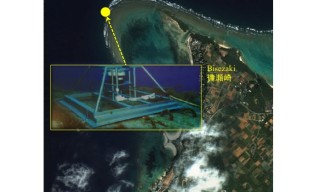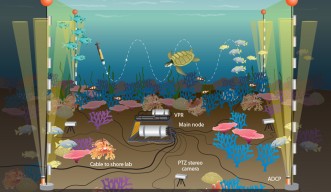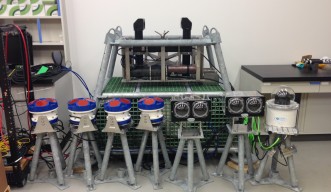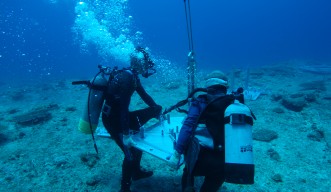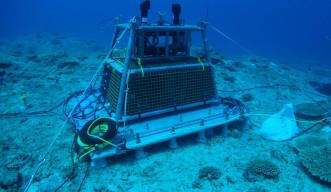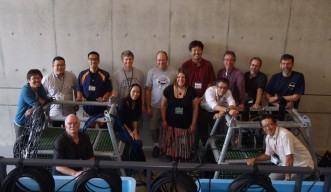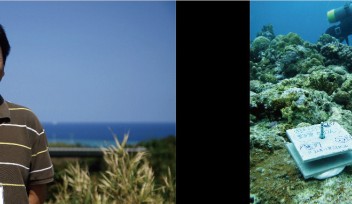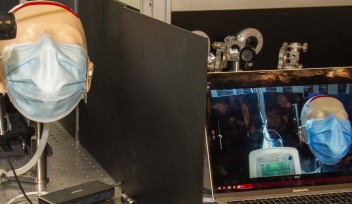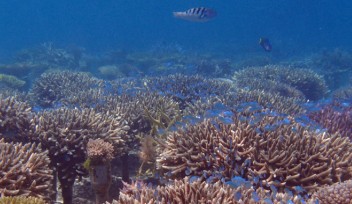Establishing World-Class Coral Reef Ecosystem Monitoring in Okinawa
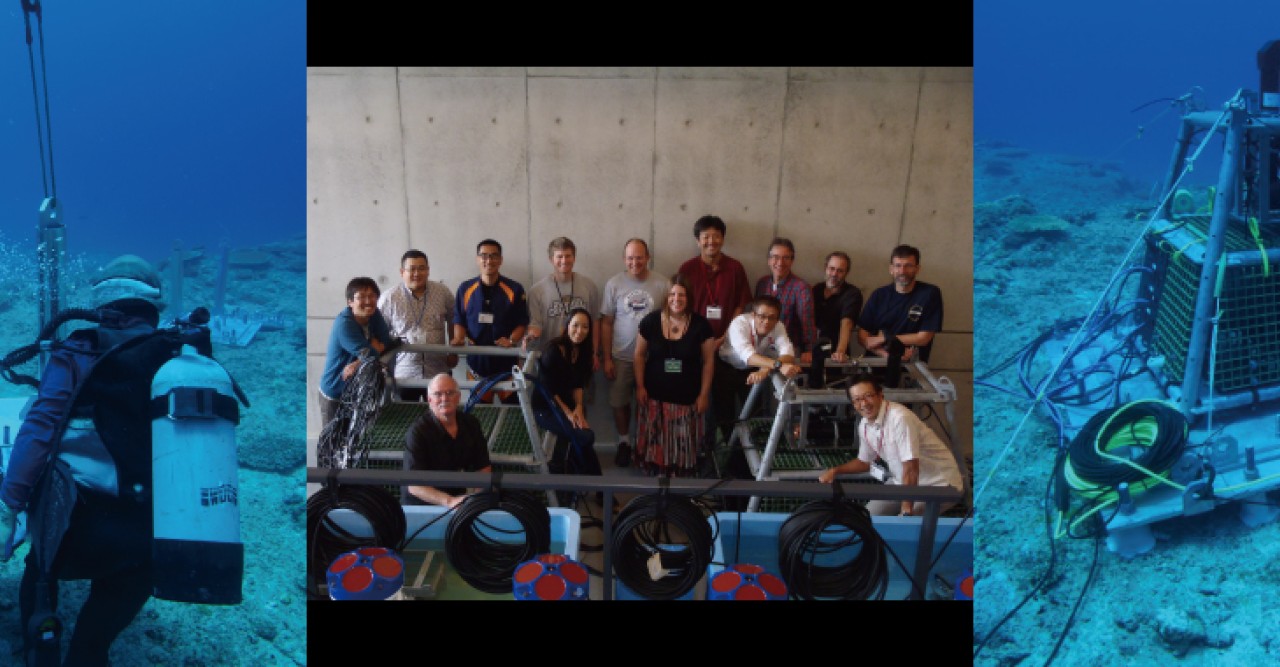
The Okinawa Institute of Science and Technology Graduate University (OIST), working in agreement with the Okinawa General Bureau’s Ocean Expo Park, has installed a marine observatory system in waters off the coast of the Ocean Expo Park in Motobu Peninsula, where the Churaumi Aquarium is located. The installation, called the Okinawa Coastal Ocean Observatory System developed in partnership with the Woods Hole Oceanographic Institution in the U.S.A., enables real-time monitoring of temperature, salinity, and other chemical, biological and physical data. Through the establishment of this world-class oceanographic monitoring system in Okinawa, OIST will advance its marine scientific research capability towards becoming an international center of marine science.
Okinawa is home to ecologically significant coral reefs situated at the northernmost end of the border between the Pacific and the Indian Oceans. These corals lie within a biodiversity hotspot that supports the highest diversity of endemic species, plants and animals in the world. The coral reefs are also economically valuable, bringing in tourists and providing excellent fishing locations. It is estimated that coral reefs generate as much as 3 trillion yen globally, and 250 billion yen in Japan.
In recent years, waters off the coast of Okinawa have been the subject of scientific studies brought on by both the increasing exploitation of natural resources and the desire to preserve the marine resources in the area. In order to understand changes in the coral reef ecosystem, an investigation into their environment is essential. To date, observations about the conditions of coral reef ecosystems have only taken place sporadically in a few places around the world. In Okinawa, there has been no long-term, uninterrupted oceanographic monitoring, which allows for an analysis of the patterns of ocean circulation and connectivity among coral inhabitants. This will now change with the installation of the Ocean Observatory System as Okinawa will benefit from one of the most advanced observatories available to scientists.
The system provides year-round biological and physical data to understand biodiversity as well as physical and geochemical processes of coral reef ecosystems. Real-time data recorded by the system are sent via an underwater fiber-optic cable to scientists who can access them remotely. Sensors placed 20 meters below the ocean surface will measure various elements including salinity, dissolved oxygen and chlorophyll levels, current speed and direction, wave length and height. Video cameras will capture images of zooplanktons and other underwater scenes, providing an accurate picture of environmental impact on coral reefs.
On September 2, OIST concluded a business collaboration agreement with the Okinawa Churashima Foundation. Under the agreement, OIST will advance its marine science research, including the complex ecology of coral reefs, using data obtained through the Okinawa Coastal Ocean Observatory System. Likewise, using the real-time data gained through the oceanographic monitoring system, the Okinawa Churashima Foundation will further advance its ongoing study on living marine resources in waters near the Ocean Expo Park, including the coral reefs and the mechanism behind their bleaching.
Specialty
Research Unit
For press enquiries:
Press Inquiry Form
